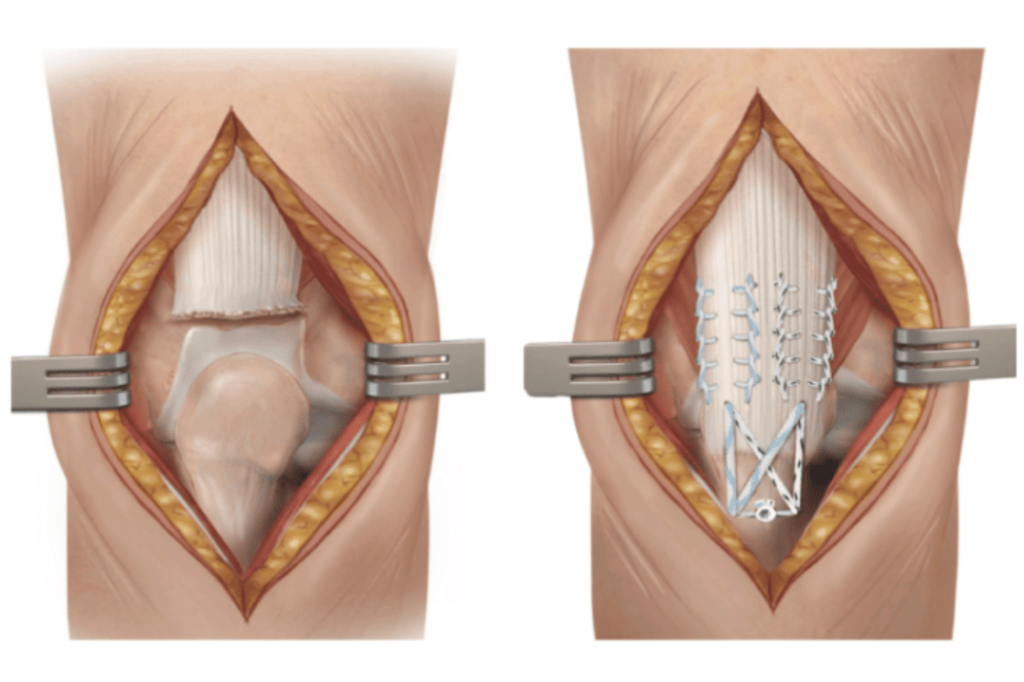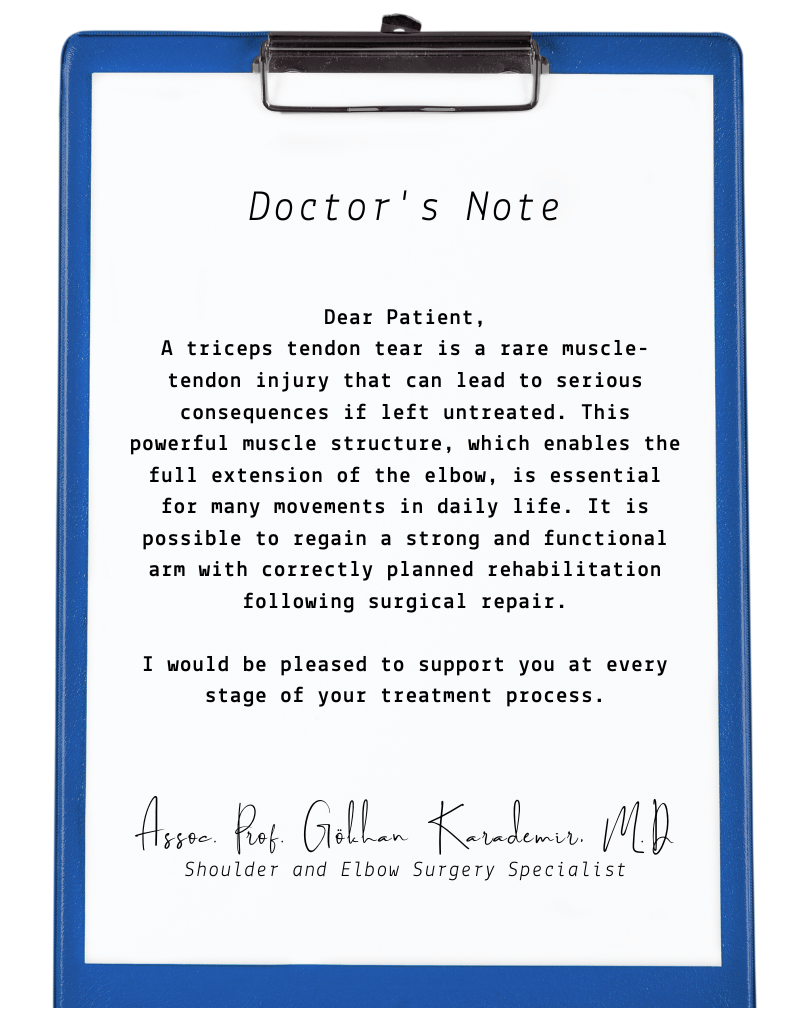The triceps tendon is the point where the powerful muscle group located on the back of the arm, which functions to straighten the elbow (known as extension), attaches to the bony structure at the back of the elbow (the olecranon). Rupture of this tendon is quite rare, but when it occurs, it causes a significant loss of strength and functional impairment. It most commonly occurs as a result of trauma, a direct blow, or sudden forceful strain.
Patients who experience a triceps tendon rupture typically present with complaints of a sudden “popping” or “tearing” sensation behind the elbow, swelling, bruising (ecchymosis), and an inability to fully straighten the arm. When the muscle contracts, a noticeable defect (a gap or indentation) and the appearance of the muscle having retracted (pulled up toward the shoulder) are prominent findings. The diagnosis is usually confirmed by a physical examination and MRI (Magnetic Resonance Imaging) scans.

For complete (full-thickness) triceps ruptures, especially in active individuals, surgical treatment is the gold standard. If left untreated, the elbow’s extension (straightening) function becomes permanently weakened, leading to significant limitations in daily life and athletic activities.
In surgical treatment, the ruptured tendon is reattached to the olecranon bone using special suture techniques. This fixation (the reattachment) can be performed using transosseous tunnels (sutures passed through the bone), screws, or anchor systems. After surgery performed with the appropriate technique, most patients regain full muscle strength and function.

Duration of Surgery: Approximately 60–90 minutes
Type of Anesthesia: General anesthesia or a nerve block (regional anesthesia)
Surgical Method: Open surgery (involving an incision over the back of the elbow)
First day: 3–5
First week: 2–3
After the 2nd week: 1
Usually discharged the same day
An overnight stay (1 night) may be necessary if required
First 2 weeks: The arm is immobilized (kept still) with a plaster splint or a sling.
Weeks 3–4: Passive motion exercises (where the joint is moved without using the muscle) begin.
Weeks 5–6: Restricted active exercises are introduced.
2nd month: Active full range of motion and strengthening.
3rd month: Full return to daily activities.
4th–6th month: Return to sports and intense physical activities.
First dressing change: 2nd day
Wound check: 1st week
Suture removal (if necessary): 10th day
Only partial tears may heal without surgery. For complete ruptures, surgery is mandatory. Otherwise, the elbow's straightening (extension) function will be severely and permanently impaired.
Will my muscle strength return to normal?
Yes. With correct surgical technique and effective physical therapy, triceps strength is largely recovered.
The incision is made on the back of the elbow. Generally, after it heals, there is no cosmetically significant scar.
Early and regular exercises are critical to prevent loss of function. It is especially important to maintain range of motion and increase muscle strength after the 3rd week. In most cases, the home exercises we provide to our patients are sufficient and safe when performed as instructed. If it is determined during follow-up appointments that the expected range of motion is not being achieved, formal physical therapy may be required, although this is rare.